
Meet science standards with targeted activities and open-ended projects

Creative work with technology tools, like Wixie, can help you get primary students to embrace the inquiry process while developing essential skills for future science learning. Simple activities you do together can teach and assess student understanding of the five senses, animal classification, and life cycles, helping you address specific standards from kindergarten to second grade. You can further develop learners’ observation, problem-solving, and critical thinking skills with student-created projects that incorporate painting, diagramming, writing, storytelling, narration, and more.
Building strong foundational knowledge about science is crucial. Sorting activities can help you assess student understanding on a topic. For example, after teaching students about the differences between living and nonliving things, have students classify objects to evaluate comprehension. If you have an interactive whiteboard, ask individual students to drag a sticker to classify an item, prompt them to explain their decision, and discuss with the rest of the class.
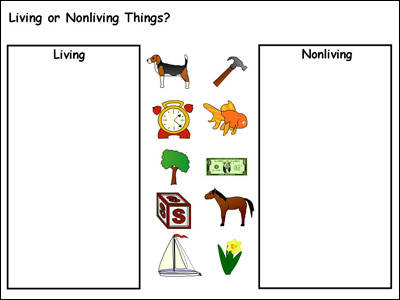
Take a more creative approach to evaluate comprehension by asking students to tell stories that show what they know about the topics they are learning. For example, after learning about the pond habitat, have students write and illustrate a one-page story that includes animals and plants found in ponds. Combine each student’s page into a class book you can share in the school library and with parents at home.
One of the most important skills young students need to learn is scientific observation, the foundation of the scientific method and the reason students learn about the five senses so early. It is important for young scientists to learn that observing plants and animals leads to questions (inquiry) and helps them draw conclusions. After learning about the seasons, have students write a five senses poem about one of the seasons or paint what a tree looks like during each season.
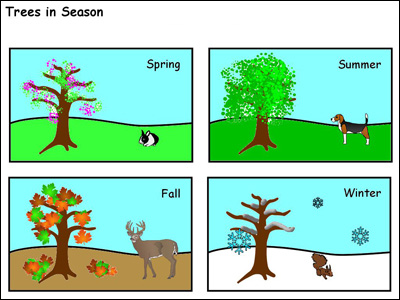
If you are studying weather, have students look outside to observe the weather each day. Have students describe the daily weather using pictures and weather vocabulary. Use a classroom computer or an interactive whiteboard to chart the weather for one week or even a month.
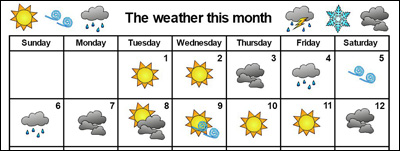
Students can apply their observation skills by comparing and classifying. Give students multiple objects and then ask them to use their five senses to identify how they are different and how they are alike and then sort them into groups. Then, ask them to group them together and share the “rules” they used to sort. Identifying similarities and differences is one of the nine instructional strategies found to improve student achievement in Robert Marzano, Debra Pickering, and Jane Pollock's Classroom Instruction that Works.
Once your students have developed as writers, have them identify similarities and differences through the creation of an If...But Report. For example, students can compare different types of animals or weather by writing sentences that begin with “If I were” to describe the first object, followed by “But I would not” to describe the second topic.

If your students grow bean plants to learn about the life cycle of a plant and the requirements for plant growth, ask them to keep a science journal with text and pictures. After they record their observations, create a printed journal or online life cycle site. Consider having individual students capture their observations at a seed center in your classroom and combine their reflections to create a class journal.
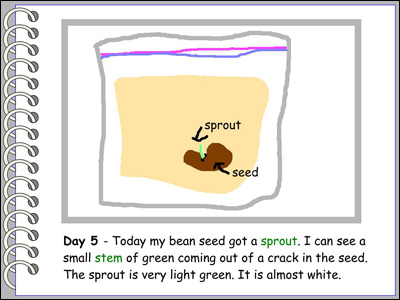
As students write about their observations, work with them to ask questions about what is happening and what they think will happen next. This will help them begin to use observations as the basis for scientific inquiry. The scientific process isn’t about finding the answer to someone else’s questions, but learning to ask questions and develop ways they can experiment to find an answer. Start with a simple inquiry process that leads them to ask a question, make a guess (hypothesis), and determine how they can test, and draw conclusions.
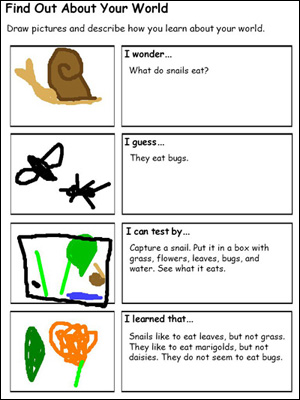
Constructing their own models and diagrams requires higher-order thinking skills and helps students organize information. This type of project work also helps you assess their comprehension. For example, after studying the water cycle, have students paint the cycle. The paintings make a great final assessment because the activity does not provide hints or clues. Students can’t guess using content and terms you have provided and must have a thorough understanding of the water cycle to complete this activity.

Students love to be part of the action. Asking them to become an animal they are studying is motivating and a great way to help them practice scientific observation and writing in the first person. First, capture students’ faces using a web cam. Next, provide a few photographs of animals they can use for reference as they draw accurate body parts around their faces to transform themselves into animals. Once the drawing is complete, have students write a story about their life as this animal, including details to demonstrate knowledge of the animals’ features and habitats.
Painting images, diagramming cycles, and creating stories gives students agency in their learning and fosters the development of important knowledge and skills to support future science learning.
You can find more science lesson ideas in the Creative Educator Science lesson library.
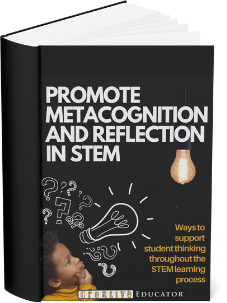
SUPPORT
STEM DESIGN
PROCESS
Get step-by-step design ideas, printable organizers, routines, and formative assessments to support student thinking in STEM.

Follow us on Instagram for daily inspiration

Create a thought web, cluster, flowchart, or other graphic organizer for a lesson
Creating timelines with Wixie's Mind Map tool
Creative, digital book reviews
Fun and powerful ideas with animated characters

Wixie
Share your ideas, imagination, and understanding through writing, art, voice, and video.

Rubric Maker
Create custom rubrics for your classroom.

Pics4Learning
A curated, copyright-friendly image library that is safe and free for education.

Wriddle
Write, record, and illustrate a sentence.

Get creative classroom ideas delivered straight to your inbox once a month.
Topics